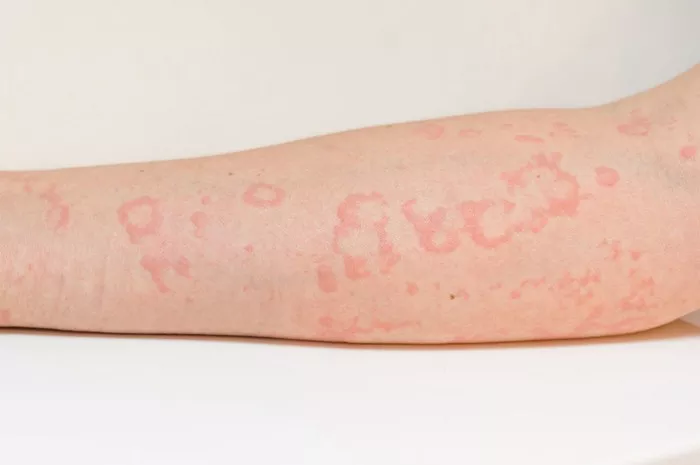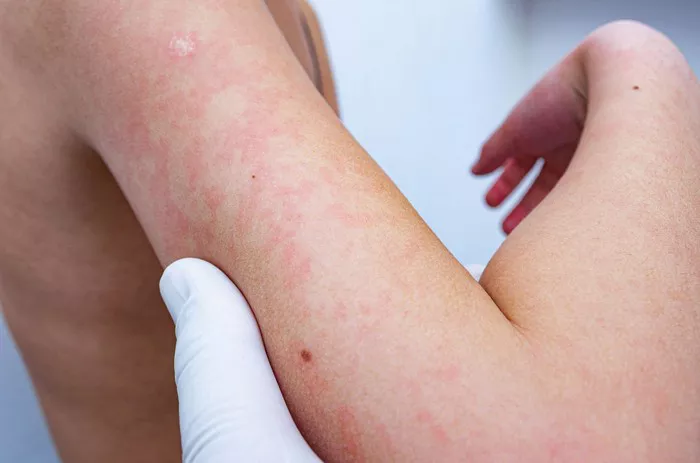Hives, medically known as urticaria, are a common skin condition characterized by raised, itchy welts that can vary in size and shape. While they often appear suddenly and resolve within a few hours to days, the persistent spread of hives can be a cause of concern and discomfort for many individuals. Understanding why hives continue to spread is crucial for effective management and treatment of this condition.
The Nature of Hives
Before delving into the reasons behind the relentless spread of hives, it’s essential to comprehend the nature of this skin condition. Hives are typically triggered by an immune response, leading to the release of histamine and other chemicals into the bloodstream. This release causes blood vessels to leak, resulting in the characteristic welts and itching associated with hives.
Triggers and Allergens
One of the primary reasons why hives persist and spread is due to exposure to triggers and allergens. These can vary widely from person to person and may include:
1. Food Allergens: Certain foods, such as nuts, shellfish, eggs, and dairy products, can trigger an allergic reaction leading to hives.
2. Medications: Some medications, including antibiotics, nonsteroidal anti-inflammatory drugs (NSAIDs), and certain pain relievers, are known to cause hives in susceptible individuals.
3. Insect Bites and Stings: The venom injected by insects like bees, wasps, and ants can provoke an allergic response, resulting in hives.
4. Environmental Factors: Exposure to environmental allergens such as pollen, pet dander, mold, and dust mites can also trigger hives in sensitive individuals.
Identifying and avoiding these triggers is crucial in preventing the spread of hives. However, pinpointing the exact cause can be challenging, as hives may appear hours or even days after exposure to the trigger.
Stress and Emotional Factors
The mind-body connection plays a significant role in the development and persistence of hives. Stress, anxiety, and other emotional factors can exacerbate the symptoms of hives and contribute to their spread. The release of stress hormones such as cortisol can further activate the immune system, leading to more pronounced allergic reactions and worsening hives.
Moreover, the itching and discomfort associated with hives can themselves be stress-inducing, creating a vicious cycle that perpetuates the condition. Managing stress through relaxation techniques, mindfulness, and stress-reduction strategies can help break this cycle and reduce the spread of hives.
Underlying Health Conditions
In some cases, the persistence and spread of hives may be indicative of underlying health conditions. Autoimmune disorders such as lupus and thyroid disease can predispose individuals to chronic hives. Similarly, infections such as hepatitis, Epstein-Barr virus, and Helicobacter pylori bacteria have been linked to the development of hives.
Furthermore, conditions that affect the immune system, such as HIV/AIDS and certain cancers, may increase the risk of chronic hives. Identifying and treating these underlying health issues is essential in managing hives and preventing their spread.
Genetic Predisposition
Genetics also play a role in the development and persistence of hives. Some individuals may have a genetic predisposition to allergic conditions, making them more susceptible to hives. Family history of allergies, asthma, or eczema can increase the likelihood of experiencing hives and contribute to their spread.
Treatment and Management
Effective management of hives involves a multifaceted approach aimed at identifying triggers, reducing symptoms, and preventing their spread. Treatment options may include:
1. Antihistamines: These medications help block the effects of histamine, reducing itching and inflammation associated with hives.
2. Corticosteroids: In severe cases, corticosteroid medications may be prescribed to reduce inflammation and suppress the immune response.
3. Avoidance of Triggers: Identifying and avoiding triggers such as certain foods, medications, and environmental allergens is crucial in preventing the spread of hives.
4. Stress Management: Techniques such as deep breathing, meditation, and yoga can help alleviate stress and reduce the severity of hives.
5. Topical Treatments: Calamine lotion, corticosteroid creams, and antihistamine creams can provide relief from itching and inflammation associated with hives.
In cases of chronic or recurrent hives, consultation with a dermatologist or allergist may be necessary to determine the underlying cause and develop a comprehensive treatment plan.
Conclusion
Hives, though often transient, can persist and spread due to a variety of factors including exposure to triggers, stress, underlying health conditions, genetic predisposition, and more. Understanding the complex interplay of these factors is essential in effectively managing and treating hives. By identifying triggers, managing stress, addressing underlying health issues, and implementing appropriate treatment strategies, individuals can find relief from hives and prevent their relentless spread. Seeking guidance from healthcare professionals is key in navigating the complexities of this common yet challenging skin condition.
























